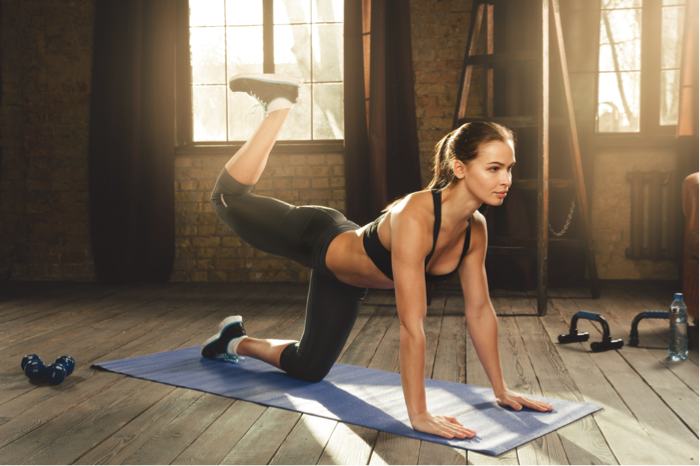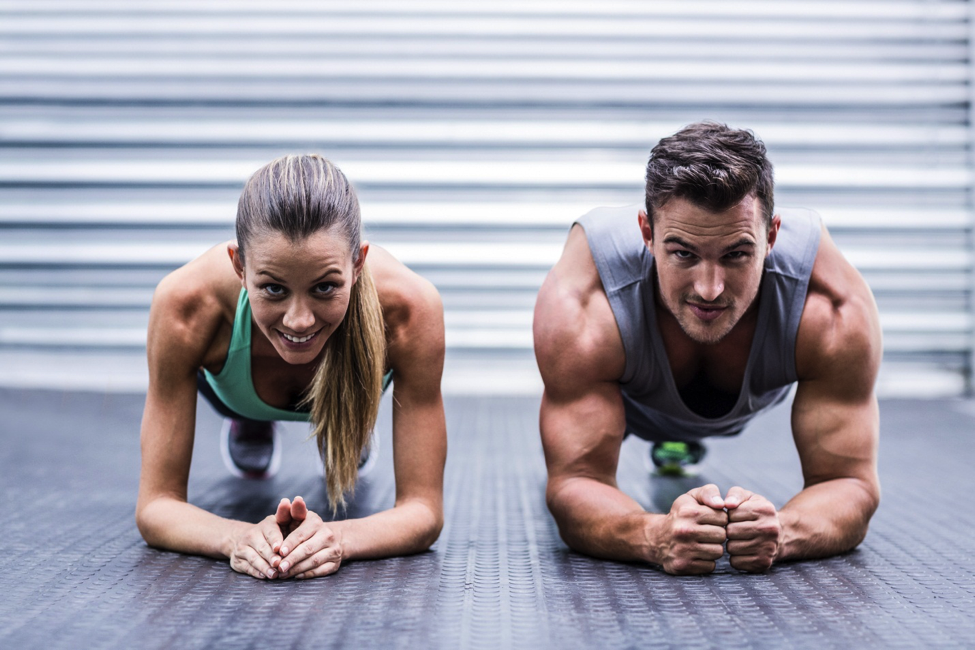
by Patrick Lenhoff
Image source: Deposit PhotosA home gym affords you the luxury of privacy, convenience and long term economy. Easy access and close proximity means you can fit your workout into any part of your day without worries about commuting or having to deal with crowds.
Here are a few recommendations for building a home gym that provides supreme functionality, usefulness and enjoyment:
1. Cardio Equipment
Take your pick: stationary bike, elliptical machine, stair climber or treadmill. Cardio is crucial to any well-rounded fitness plan.
Sure, you can hit the local trails, but what can you do during inclement weather? A home-based cardio solution allows you to complete your fat-burning work during any time of year.
When looking to purchase a home gym equipment, keep in mind that the purpose should be to help you exercise and burn calories, while taking up as little space as possible.
2. Dumbbells
Dumbbells are one of the main essentials of classic gyms and muscle routines. Despite the advent of complex, trendy machines and fancy workouts, exercises with free weights still make up the bulk of basic and compound movements.
There are three main categories of dumbbells to consider: plate-loaded, traditional and adjustable. Plate-loaded are the most economical. You can purchase individual plates or sets of plates. Traditional dumbbells resemble the sort you might find at a public gym. While they’re solid, durable and lasting, they require racks and space to maintain.
Adjustable dumbbells save on space, condensing a range of dumbbell poundage into a single set of dumbbells. However, these have a substantial dollar-value attached that is potentially too steep for some.
3. Barbells
Barbells are an absolute essential of a home gym. When used during exercises, barbells demand a high degree of stabilization and coordination that conditions your body to an equal or greater degree than any fancy gym machines. Everything from back work, arms and chest to leg work depends on barbells for successful completion.
Like dumbbells, barbells require plates. Choose between steel for lasting sturdiness or bumper plates for safety. Luckily you can stack most brands of plates when you’re not using them, which maximizes space within your home gym.
4. Power Rack
The power rack is a central component of home and public gyms. This one item enables you to safely perform bench presses and deadlifts. A power rack comes in handy for seated or standing presses that target the shoulders, arms and back.
It also functions as a sort of safety net within which you can perfect your squatting technique, since it allows you to rack weighted barbells in a standing or squatting position.
Bear in mind that squats catalyze an anabolic environment, inadvertently adding lean mass throughout your whole body. Any piece of equipment that facilitates the squat safely is worth its weight in any currency.
Look for a power rack that is tall enough for overhead pressing and has safety arms that can be lowered or raised.
5. Jump Rope
Go old school and jump yourself to a leaner you. Jump rope is a fairly low impact form of cardio that also targets your core and your legs while demanding coordination.
If you’re advanced, opt for a weighted rope to build strength or a lightweight rope for speed and timing.
If you’re a beginning jumper, just find the most resilient rope you can at the right price and use it consistently to build your cardiovascular health.
6. Adjustable Weight Bench
Adjustable weight benches provide multi-purpose solutions to a variety of exercise needs. You can raise or lower them to flat, incline or decline positions to target abs, chest, arms and back muscles from different angles.
When perusing adjustable weight benches, look for models that come with an attached or detachable leg extension.
With a leg extension, you can further target your quads and hamstrings. An additional benefit is the ability of most attachments to accept weight plates for increased poundage as you advance and grow stronger.
7. Flooring
Lifting weights at home punishes more than your weak muscles. It also potentially ruins your floors. Protect your floors and your equipment with proper flooring, such as foam mats.
Lightweight yet rugged, foam mats come in all shapes and sizes, some with interlocking features and some with flat borders that rest flush with other mats.
No Pain, No Gain
The old saying applies to building your best body, but it needn’t apply to your efforts of creating a home gym. With a little research and just enough funds, you can turn your basement or other room in your house into a bona fide gym.
(Patrick Lenhoff is a personal trainer and a Contributing Editor for Fitness Tech Pro. He enjoys creating powerful, personalized fitness routines for his clients and reviewing the most popular gym equipment on the market.)





